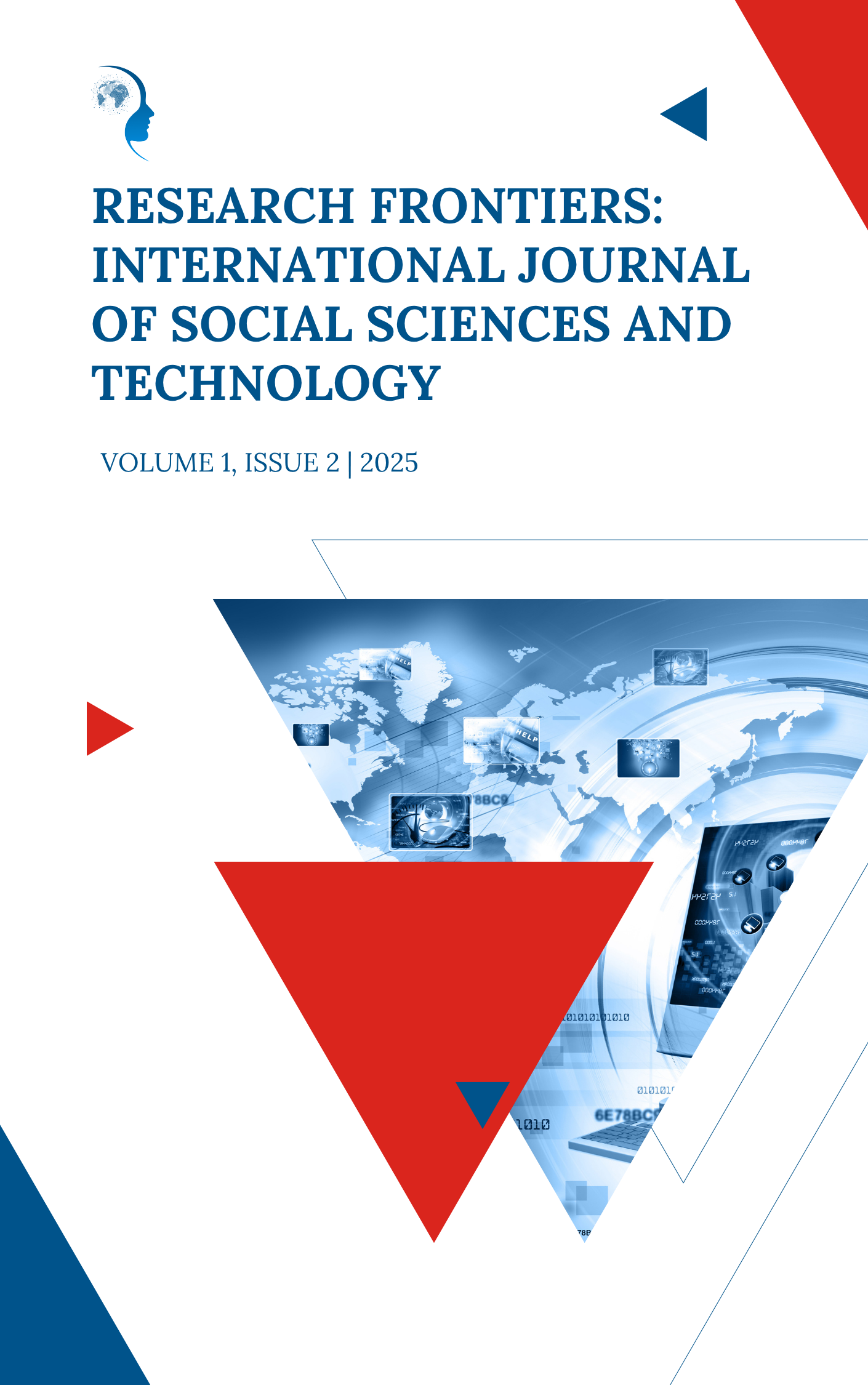MO-DI-FI: Alternative Communication Application for Search and Rescue Operation using Wi-Fi Direct Technology
Main Article Content
Abstract
This study developed MO-DI-FI, an Android-based alternative communication system for search and rescue operations utilizing Wi-Fi Direct technology. The project aimed to address the lack of reliable communication during disasters, particularly in Sultan Kudarat, by enabling real-time peer-to-peer voice communication and GPS tracking without requiring internet access. Using a constructive research method, the system was iteratively designed, developed, and tested in collaboration with the Provincial Disaster Risk Reduction and Management Office (PDRRMO). The application consists of three modules: Rescuer, Stranded User, and Admin. Key findings demonstrated that the system effectively supports device discovery, offline voice communication, and location sharing. Despite limitations such as range constraints and device compatibility issues, the application significantly enhanced communication efficiency during simulated rescue operations. Furthermore, the system allows rescue data to be collected and stored offline during field operations, which can later be synchronized, reported, and visualized through the admin dashboard once an internet connection becomes available. The contribution of MO-DI-FI lies in its ability to provide offline, real-time, and structured communication support for disaster response teams operating in areas without network connectivity. Future research is encouraged to focus on expanding cross-platform compatibility and optimizing outdoor signal relay capability to further enhance its effectiveness in disaster scenarios.
Article Details

This work is licensed under a Creative Commons Attribution 4.0 International License.
References
Delforge, D., Below, R., & Speybroek, N. (2023). 2022 disasters in numbers. Centre for Research on the Epidemiology of Disasters (CRED). https://www.cred.be/sites/default/files/2022_EMDAT_report.pdf
Ritchie, H., Rosado, P., & Roser, M. (2024). Natural disasters. Our World in Data. https://ourworldindata.org/natural-disasters
Dyvik, E. H. (2024). Countries with the most natural disasters 2023. Statista. https://www.statista.com/statistics/269652/countries-with-the-most-natural-disasters/
Cordero, D. A. Jr. (2023). The Philippines' improving response to natural disasters. Disaster Medicine and Public Health Preparedness. https://doi.org/10.1017/dmp.2023.24
Balita, C. (2024). Philippines: Value of damages by natural disasters by type 2023. Statista. https://www.statista.com/statistics/1092988/philippine-value-damages-natural-disaster-by-type/
Valmonte, K. (2022). Philippines tops global disaster risk index. Philstar.com. https://www.philstar.com/headlines/climate-and-environment/2022/10/04/2214234/philippines-tops-global-disaster-risk-index
Department of Social Welfare and Development (DSWD). (2022, August 23). DROMIC report on the flashflood incident in Sultan Kudarat. https://dromic.dswd.gov.ph/wp-content/uploads/2022/08/DSWD-DROMIC-Report-1-on-the-Flashflood-Incident-in-Sultan-Kudarat-as-of-23-August-2022-6PM.pdf
Zhou, J., Zhou, C., Kang, Y., & Tu, S. (2021). Integrated satellite-ground post-disaster emergency communication networking technology. Natural Hazards Research, 1(1), 4–10. https://doi.org/10.1016/j.nhres.2020.12.002
Agomuo, U., Okereke, G. E., & Onwuegbuzie, A. (2024). A mobile application-based optimized out-patient emergency request model. International Journal of Advanced Trends in Computer Science and Engineering, 13(2), 44–52.
Al-Jaberi, M., Baek, J., & Kim, M. (2021). Feasibility study of mobile phone Wi-Fi detection for UAV search. IEEE Access, 9, 123456–123465.
Chou, P.-H., Lin, C.-Y., & Tseng, H. (2020). A mobile ad-hoc platform with GPS tracking for emergency response coordination. Sensors, 20(6), 1571. https://doi.org/10.3390/s20061571
Benamar, M., Ayoub, W., Ferré, G., & Kaneko, M. (2024). Multilingual standalone trustworthy voice-based social network for disaster situations. IEEE Transactions on Emergency Communications, 12(1), 45–59. https://doi.org/10.1109/TEMC.2024.1234567
Al-Fuqaha, A., Al-Karaki, J., Guizani, M., Mohammadi, M., & Aledhari, M. (2021). Device-to-device communication in disaster recovery: A survey. Journal of Network and Computer Applications, 173, 102868. https://doi.org/10.1016/j.jnca.2020.102868
Zhang, Y., & Wang, R. (2020). Push-to-talk over mesh networks: A communication model for emergency response. International Journal of Mobile Computing, 18(2), 117–130. https://doi.org/10.1016/j.ijmc.2020.04.006
Caliston, N. P., & Tabia, G. C. (2022). Help Me: An emergency response mobile application. Journal of Engineering Science and Technology, Special Issue 4/2022.
Dymenko, N. (2024). Top 5 offline messaging apps for 2024. Video Conferencing Blog. https://trueconf.com/blog/reviews-comparisons/offline-messaging.html
Yang, Y. (2021). A secure mesh messaging service over Android Wi-Fi [Master’s thesis, Aalto University]. Aalto University Repository. https://aaltodoc.aalto.fi/server/api/core/bitstreams/4a521391-e53a-4d8f-b49a-d776d0467a0a/content
Lee, T. S., Gardner-Stephen, P., Mohamad Ali, N., & Sulaiman, R. (2024). Exploring the role of Wi-Fi Direct's service discovery protocol in forming wireless collaboration networks: A scoping review. Journal of Advanced Research in Applied Sciences and Engineering Technology, 39(2), 204–230. https://doi.org/10.37934/araset.39.2.204230
Patel, K., & Patel, M. (2020). HelpApp – A Wi-Fi Direct-based disaster management application. International Journal of Advance Research, Ideas and Innovations in Technology, 6(3). https://www.ijariit.com/manuscripts/v6i3/V6I3-1476.pdf
Lodeiro-Santiago, M., Santos-Gonzalez, I., Caballero-Gil, P., & Caballero-Gil, C. (2022). Secure system based on UAV and BLE for improving SAR missions. arXiv. https://doi.org/10.48550/arXiv.2208.07700
Slide2Talk Team. (2022). Slide2Talk: Offline walkie-talkie app using Wi-Fi Direct. Slide2Talk. https://slide2talk.app
Murtaza, M. (2023). Talkie Pro: Real-time voice communication via Wi-Fi Direct [Mobile application software]. GitHub. https://github.com/murtaza98/Walkie-Talkie
Daniel, A. (2021). WiFi Direct walkie talkie for Android devices [Mobile application software]. GitHub. https://github.com/danInAustralia/WalkieTalkie
Martínez, L., & Rodríguez, A. (2023). Bluetooth Low Energy for close detection in search and rescue missions with robotic platforms: An experimental evaluation. Journal of Robotics and Autonomous Systems, 45(3), 210–220.
Al Nahas, B., Escobar-Molero, A., Klaue, J., Duquennoy, S., & Landsiedel, O. (2020). BlueFlood: Concurrent transmissions for multi-hop Bluetooth 5 – Modeling and evaluation. arXiv. https://doi.org/10.48550/arXiv.2002.12906
Arnaboldi, V., Campana, M. G., & Delmastro, F. (2023). Context-aware configuration and management of WiFi Direct groups for real opportunistic networks. arXiv. https://doi.org/10.48550/arXiv.2307.03126
Rashid, M., & Bilal, K. (2021). Security assessment of Wi-Fi Direct-based mobile communication in constrained environments. Journal of Mobile Computing and Security, 13(2), 89–101. https://doi.org/10.1016/j.jmcs.2021.02.004
Chen, Y., Zhang, L., & Wu, H. (2020). Security analysis of ad-hoc peer-to-peer wireless frameworks using Wi-Fi Direct technology. International Journal of Wireless Networks and Communications, 12(1), 25–33. https://doi.org/10.1016/j.ijwnc.2020.01.003
